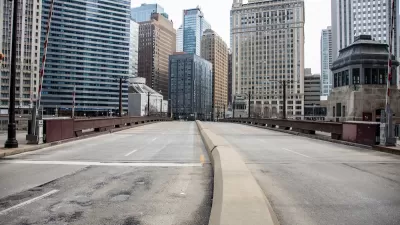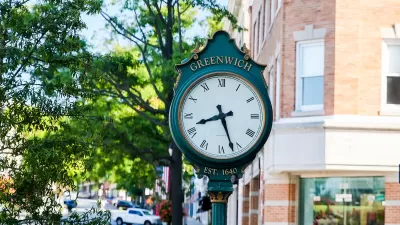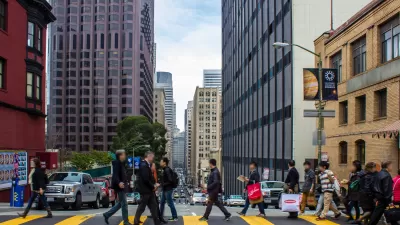Rather than ‘monofunctional’ business districts or urban playgrounds, American downtown districts could become multipurpose neighborhoods.

Writing in Wired, Amit Katwala suggests that the future of the American downtown, which has been by and large designed as “uniquely monofunctional” to serve 9-to-5 business purposes, is in not in attracting tourists with new amenities, but rather by transforming into real neighborhoods where people can live, work, and play.
As Katwala explains, “Strict zoning laws, combined with the widespread leveling of city centers in the 1960s and 1970s to build multilane highways, have created downtowns that are difficult to use for anything other than white-collar work.”
To revitalize struggling downtowns, some cities are reorienting their central business districts as “playground cities,” defined in the article as “downtown areas will be remodeled to attract leisure visitors as well as workers” but that urban scholars like Yonah Freemark warn could be a passing fad.
According to Freemark, “block-wide skyscrapers can also stifle life at ground level,” offering little interaction for pedestrians. “The park space is minimal. Roadways are horrible and extremely car-focused. All those things have to be thrown out if you want to create a neighborhood.”
Katwala writes, “Perhaps the answer to saving downtowns is actually a simple one: Transform them into neighborhoods in their own right that actually cater to the needs of the people who live there.” To start, city leaders can change policy to make it easier to convert offices and other downtown buildings to housing and other uses and reorient transit schedules to reflect post-pandemic ridership patterns.
FULL STORY: To Save Downtowns, Destroy Them

Maui's Vacation Rental Debate Turns Ugly
Verbal attacks, misinformation campaigns and fistfights plague a high-stakes debate to convert thousands of vacation rentals into long-term housing.

Planetizen Federal Action Tracker
A weekly monitor of how Trump’s orders and actions are impacting planners and planning in America.

San Francisco Suspends Traffic Calming Amidst Record Deaths
Citing “a challenging fiscal landscape,” the city will cease the program on the heels of 42 traffic deaths, including 24 pedestrians.

Defunct Pittsburgh Power Plant to Become Residential Tower
A decommissioned steam heat plant will be redeveloped into almost 100 affordable housing units.

Trump Prompts Restructuring of Transportation Research Board in “Unprecedented Overreach”
The TRB has eliminated more than half of its committees including those focused on climate, equity, and cities.

Amtrak Rolls Out New Orleans to Alabama “Mardi Gras” Train
The new service will operate morning and evening departures between Mobile and New Orleans.
Urban Design for Planners 1: Software Tools
This six-course series explores essential urban design concepts using open source software and equips planners with the tools they need to participate fully in the urban design process.
Planning for Universal Design
Learn the tools for implementing Universal Design in planning regulations.
Heyer Gruel & Associates PA
JM Goldson LLC
Custer County Colorado
City of Camden Redevelopment Agency
City of Astoria
Transportation Research & Education Center (TREC) at Portland State University
Jefferson Parish Government
Camden Redevelopment Agency
City of Claremont





























